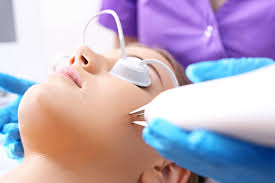
What is Laser Lightening?
Laser skin resurfacing, also known as a laser peel, uses short, concentrated beams of light to remove unwanted or damaged skin.
Laser technologies can be used to treat skin conditions like fine lines and wrinkles, acne scars, melasma, uneven skin tones and dark spots. The treatment uses a laser beam to remove the upper layer of the skin (the epidermis), while heating the underlying dermis, to stimulate the growth of new skin cells.
While laser whitening can be used to effectively treat melasma and to lighten dark spots, the more aggressive treatments can sometimes lead to “postinflammatory hyperpigmentation” (dark pigmentation) in the areas treated. This is more common in people with darker skin tones.
Skin can sometimes become raw, or blister and a yellow liquid will ooze out from the treated areas, forming a crust. It is important not to pick at this because this can lead to scarring. After about five days to a week your skin will become dry and peel and the new rejuvenated skin will show and lighten over the next couple of months. You skin may be extra sensitive to sunlight after laser treatment so it is important to minimise sun exposure and use 30+ sunscreen every day.
Advantages
- Fast results
- Most people report good results
- Our Trained Doctors
While some whitening treatments take weeks to show results, laser skin resurfacing is fast and improvements can be seen straight away. After treatment your skin will appear brighter and softer immediately and will progressively improve as it heals over 3-6 months. This is particularly true with ablative techniques where you may only require 1-2 treatments to remove dark spots and improve your skin’s appearance. Non-ablative treatments can take a little longer and may require 1-5 treatments.
While skin whitening products are not all equally effective, laser resurfacing technology has been proven to work on a number of skin problems including fine lines and wrinkles, erasing acne scars, repairing sun damage and minimising the appearance of dark spots.
Patients undergoing laser resurfacing are under professional surveillance during and after the treatment. The effects are monitored and, if any complications arise, trained doctors will be able to assist with any problems.
Disadvantages
- Possible Side effects
- Treatment Costs
- Recovery Time
While modern laser technology can assist in reducing the appearance of skin blemishes and dark spots there are possible side effects that you should be aware of. It is common for patients to see a prolonged redness and swelling of this skin after laser treatment and doctors will advise patients that the treatment may also cause skin blistering, scarring, scabbing, cold sore reactivation or other infections.
Because the laser disrupts the structure of the cells beneath the skin surface, it can potentially damage the cells that produce melanin. In some cases this can cause either increased melanin production that will darken the skin (hyperpigmentation) or, in rare cases, a lightening of the skin (hypopigmentation) in some places.
Laser resurfacing costs vary according to the area of skin to be treated and the type of laser used. You can contact or visit the doctor for exact Charges involved in treatment. Consulting a plastic surgeon may be slightly more expensive than using a dermatologist so it comes down to your own personal preference.
After laser resurfacing the skin can react in different ways. Most people say the treatment feels like a mild sunburn with a tingling sensation. The skin may show redness and swelling after the procedure and some people can experience itching or stinging for a few days later. The redness tends to last longer in blondes and red heads.
If you are having laser treatment you should plan for any recovery time needed, after talking with your surgeon. This will vary according to the treatment received. Simple treatments may need a day or two but a full facial treatment may involve having a dressing applied which needs to be kept in place for 7-21 days.


